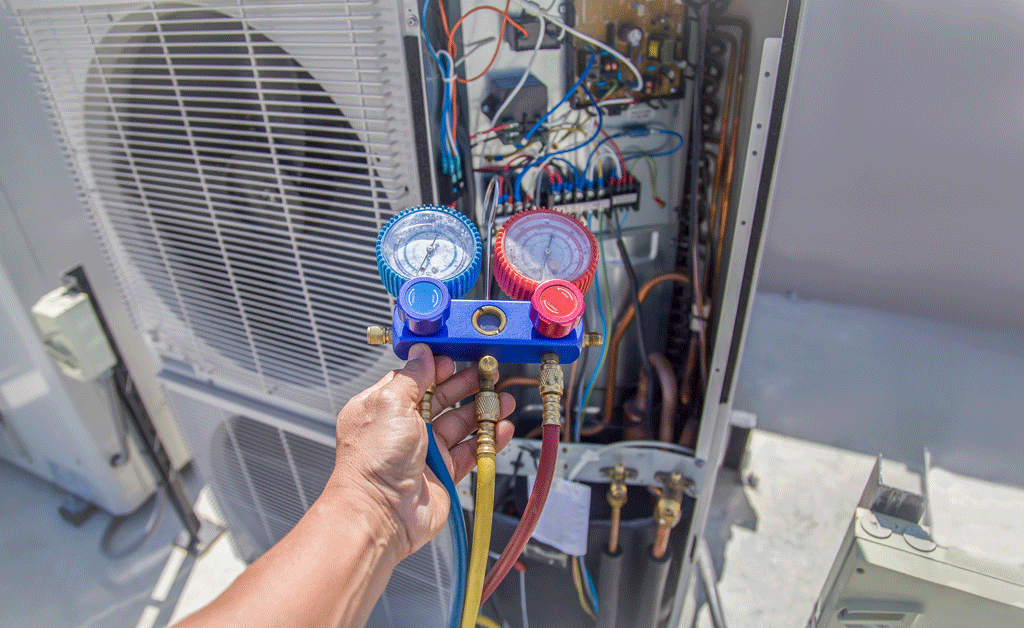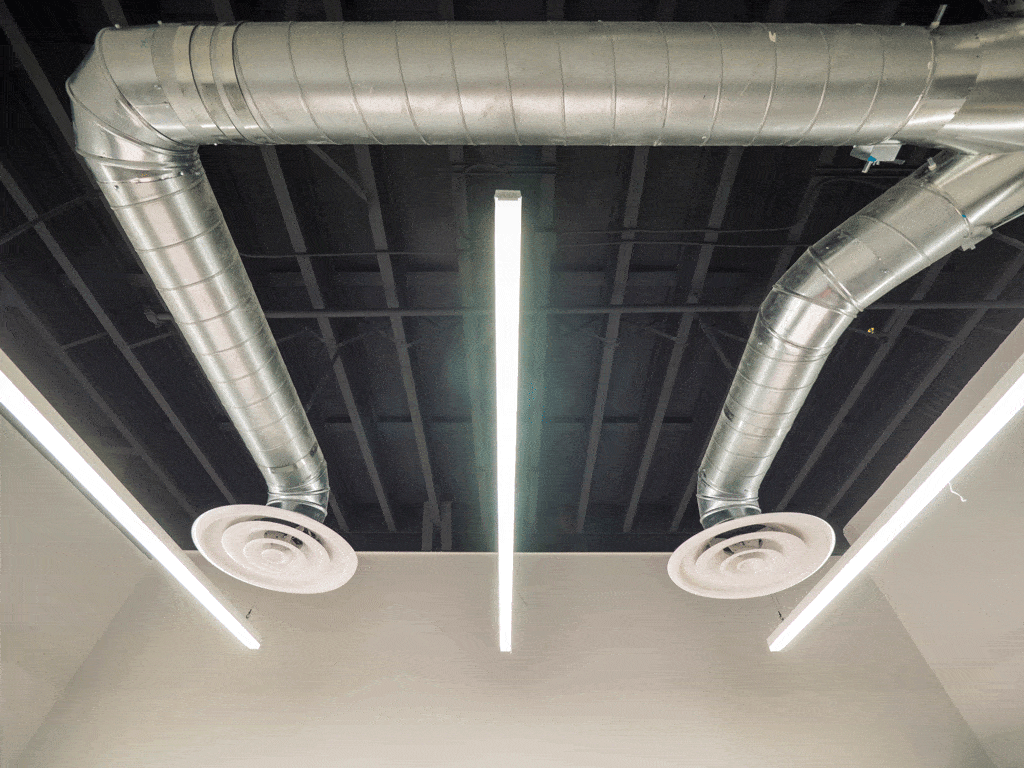
Mastering Air Conditioner Installation: Your Ultimate Guide
As a homeowner, the comfort of your living space is paramount.
And central to that comfort is the efficiency and effectiveness of your air conditioner. But how much do you know about air conditioner installation?
In this comprehensive guide, we’ll unravel the mysteries of air conditioner installation, offering expert insights, tips, and answers to all your burning questions.
A Detailed Explanation of Air Conditioner Installation
Understanding Air Conditioner Installation
At its core, AC installation is more than just setting up a cooling device in your home.
It’s a systematic process that ensures your living space remains comfortable, irrespective of the soaring temperatures outside.
But what does this process entail?
The Components of Air Conditioner Installation
When we talk about Air conditioner installation, we’re referring to a series of steps that ensure the unit functions optimally:
Assessment and Selection
Before the actual installation, professionals assess your home’s cooling needs.
This involves checking the size of the rooms, the overall layout of the house, and the local climate. Based on these factors, they recommend the most suitable air conditioner model and capacity.
Site Preparation
Once the right unit is selected, the next step is preparing the site. This might involve creating space for the outdoor unit, ensuring there’s adequate shade, and checking that there’s a power source nearby.
Setting Up the Indoor and Outdoor Units
The indoor unit, often referred to as the evaporator, is typically mounted on a wall, ensuring it’s at the right height and angle for optimal cooling.
The outdoor unit, or the condenser, is placed in a location where it can easily expel the hot air.
Electrical and Ductwork Connections
AC installation isn’t just about placing the units. It’s also about ensuring they’re properly connected to your home’s electrical system and, in the case of central systems, the ductwork.
Refrigerant Filling
Once everything’s in place, the next step is filling the unit with refrigerant. This chemical compound is what allows the air conditioner to cool the air.
Final Testing
After everything’s set up, the system is tested to ensure it’s working correctly. This involves checking the cooling efficiency, ensuring there are no leaks, and making sure all components are functioning as they should.
AC installation is a meticulous process that, when done correctly, ensures you and your family remain comfortable all year round.
Whether you’re considering a new installation or replacing an old unit, understanding the process can help you make informed decisions and ensure you get the best out of your cooling system.
Also read: The Comprehensive Guide To Year-Round Comfort | Emergency Heating And Ac Repair Service
Why Professional Expertise Matters in Air Conditioner Installation
In the realm of Air conditioner installation, expertise isn’t just a luxury—it’s a necessity. The complexity of modern cooling systems demands a deep understanding and hands-on experience to ensure optimal performance and longevity.
Here’s a deeper dive into why professional expertise is paramount:
Precision and Accuracy
When it comes to Air conditioner installation, there’s little room for error. Professionals bring a level of precision that ensures every component is correctly placed, every connection is secure, and every setting is optimized.
This precision translates to an AC system that runs smoothly and efficiently.
Knowledge of Latest Technologies
The world of air conditioning is ever-evolving, with new technologies and innovations emerging regularly.
Expert installers stay updated with the latest advancements, ensuring that your system benefits from the most recent features and efficiencies.
Tailored Solutions
Every home is unique, and so are its cooling needs. Professionals can assess the specific requirements of your space and provide tailored solutions.
Whether it’s choosing the right model, determining the best location for installation, or suggesting energy-saving tips, their expertise ensures a customized approach.
Troubleshooting and Problem Solving
Even with the most straightforward installations, unforeseen challenges can arise. A seasoned installer, armed with a wealth of experience, can quickly identify issues and implement solutions, ensuring the installation process remains seamless.
Avoiding Common Pitfalls in Air Conditioner Installation
Embarking on the journey of Air conditioner installation might seem straightforward, but the path is riddled with potential pitfalls. These missteps, often overlooked by the untrained eye, can lead to inefficiencies, increased costs, and even system failures.
Here’s why avoiding these common pitfalls is crucial and how professional installation can help:
Incorrect Sizing
One of the most common mistakes in Air conditioner installation is choosing a unit that’s either too large or too small for the space.
An oversized unit can lead to frequent on-off cycles, reducing efficiency and wear on the system. Conversely, an undersized unit will struggle to cool the space adequately, leading to overworking and reduced lifespan.
Improper Placement
The location of both the indoor and outdoor units plays a pivotal role in the system’s efficiency.
Placing the outdoor unit in direct sunlight or the indoor unit in a corner can hinder airflow and cooling performance.
Faulty Electrical Connections
Air conditioners demand specific electrical setups. Incorrect wiring not only poses a safety risk but can also affect the unit’s performance and durability.
Overlooking Ductwork
For central AC systems, the condition and design of the ductwork are paramount. Leaky or poorly designed ducts can lead to significant energy losses, undermining the efficiency of the entire system.
Skimping on Maintenance
While not directly related to the installation process, neglecting regular maintenance post-installation is a pitfall many homeowners fall into.
Regular check-ups and cleanings ensure the system runs optimally and can preempt potential issues.
While Air conditioner installation might appear as a simple plug-and-play task, the nuances and intricacies involved demand attention to detail.
By being aware of and avoiding these common pitfalls, homeowners can ensure their cooling systems offer optimal performance, energy efficiency, and longevity.
Also read: The Ultimate Guide To Emergency Heating And Ac Repair Services

Photo By StunningArt at Shutterstock
Choosing the Right Air Conditioner Unit for Your Home
The process of Air conditioner installation begins long before the unit is set up in your home. It starts with selecting the right unit tailored to your specific needs.
Making the right choice is crucial for optimal performance, energy efficiency, and the overall lifespan of the system.
Let’s delve deeper into the factors that influence this decision:
Understanding Your Home’s Cooling Needs
Every home is unique, with its own set of cooling requirements.
Factors such as the size of the rooms, the overall layout of the house, the number of occupants, and even the local climate play a pivotal role.
For instance, a large open-plan living area might require a more powerful unit compared to a small bedroom. Additionally, homes located in regions with sweltering summers might have different needs compared to those in milder climates.
By assessing these factors, you can determine the capacity and type of air conditioner best suited for your space.
The Different Types of Air Conditioners
When it comes to AC installation, there’s a plethora of options to choose from:
Central Air Conditioners
Ideal for cooling large homes or multiple rooms. They are more energy-efficient but also more expensive upfront.
Ductless Mini-Split Systems
Perfect for homes without ductwork. They allow for room-by-room temperature control, offering both cooling and heating solutions.
Window Units
Suitable for cooling single rooms. They are more affordable but might not be as energy-efficient as other options.
Portable Units
These are mobile and can be moved from room to room. Ideal for rented apartments or homes where permanent installation isn’t feasible.
Understanding the pros and cons of each type can guide you in making an informed decision tailored to your home’s specific needs.
Energy Efficiency and Cost Implications
While the initial cost of the unit is a significant factor, it’s essential to consider the long-term energy efficiency of the system.
Look for units with a high Seasonal Energy Efficiency Ratio (SEER) rating.
A higher SEER rating indicates better energy efficiency, which can translate to lower electricity bills in the long run. Additionally, investing in an energy-efficient unit might qualify you for rebates or tax credits, further offsetting the initial cost.
Brands and Warranty
The brand of the air conditioner is another crucial factor. Established brands often offer better quality, durability, and after-sales service.
Moreover, consider the warranty provided. A longer warranty period can be an indicator of the manufacturer’s confidence in the product’s quality and durability. It also offers peace of mind, knowing that any potential issues within the warranty period will be addressed by the manufacturer.
AC installation is a significant investment, both in terms of money and the comfort of your living space.
Taking the time to choose the right unit tailored to your home’s specific needs ensures optimal performance, energy efficiency, and a long lifespan for the system.
The Science of Placement in Air Conditioner Installation
The success of AC installation doesn’t solely rely on the type or brand of the unit but also heavily depends on its placement.
Proper positioning can drastically influence the efficiency, performance, and lifespan of the system.
Let’s delve into the intricacies of placement and why it’s a science in its own right:
Optimal Location for Indoor Units
When it comes to the indoor component of Air conditioner installation, several factors dictate the best placement:
Height from the Ground
Ideally, the unit should be installed at least 7-8 feet above the ground to ensure uniform cooling throughout the room.
Wall Strength
The wall chosen should be strong enough to bear the weight of the unit. It’s also crucial to ensure there’s enough space around the unit for unhindered airflow.
Away from Direct Sunlight
Placing the indoor unit away from direct sunlight or heat sources can enhance its cooling efficiency.
Distance from Electronic Appliances
Electronic devices emit heat. Keeping the AC unit away from such devices ensures it doesn’t have to work extra hard to cool the room.
Strategic Positioning of Outdoor Units
The outdoor unit plays a pivotal role in the AC installation process. Its placement can influence the overall efficiency of the system:
Shaded Area
While it’s essential for the outdoor unit to be in an open space, it’s beneficial if the area is shaded. Direct exposure to sunlight can reduce efficiency.
Elevated Platform
The unit should be placed on an elevated platform to protect it from water during rains or flooding.
Adequate Space
Ensure there’s at least 1-2 feet of space around the unit. This promotes better airflow and easy maintenance access.
The Role of Ventilation
Ventilation is the unsung hero of efficient AC installation:
Unobstructed Airflow
Both the indoor and outdoor units need unhindered airflow to function optimally. Any obstructions can lead to inefficiencies and increased wear on the system.
Regular Cleaning
Over time, dust and debris can accumulate, obstructing the vents. Regular cleaning ensures the vents remain clear, promoting better airflow and cooling efficiency.
The Impact of Surrounding Structures
The surrounding environment plays a significant role in Air conditioner installation:
Avoiding Reflective Surfaces
Surfaces that reflect sunlight, like glass windows, can direct more heat towards the unit, making it work harder.
Distance from Other Appliances
Other heat-emitting appliances can influence the temperature around the AC unit. It’s essential to ensure a reasonable distance between them.
Electrical Aspects of Air Conditioner Installation
The realm of AC installation is not just about ensuring the right fit and placement; it’s also deeply intertwined with the electrical components of the system.
The electrical aspects are crucial, as they ensure the unit functions safely and efficiently.
Let’s explore the intricacies of these electrical considerations.
Understanding the Power Requirements
Every air conditioner comes with specific power requirements. It’s essential to ensure that your home’s electrical system can cater to these needs.
For instance, larger AC units might require a dedicated circuit to handle the load without tripping. On the other hand, smaller units might work well with existing circuits.
It’s crucial to understand these requirements during the Air conditioner installation process to avoid potential electrical issues down the line.
Safety Protocols and Grounding
Safety is paramount when dealing with electrical installations.
One of the primary safety measures in Air conditioner installation is grounding. Grounding ensures that in the event of a short circuit or any other electrical malfunction, the excess electricity has a direct path to the earth, reducing the risk of electric shocks or fires.
Proper grounding not only protects the AC unit but also safeguards your home and its occupants.
Wiring and Connections
The wiring aspect of Air conditioner installation is intricate. It involves connecting the indoor unit to the outdoor unit, ensuring the thermostat is correctly wired, and making sure all connections are secure.
Proper wiring ensures efficient communication between different components of the system. For instance, when the thermostat senses the room temperature is higher than the set point, it signals the AC to start cooling.
Such communication is facilitated by the intricate web of wires connecting various parts of the system.
Circuit Breakers and Surge Protection
Given the significant power that air conditioners draw, they are often connected to dedicated circuit breakers. These breakers ensure that in case of any electrical anomaly, the power to the AC unit is cut off, preventing potential damage.
Additionally, considering the investment involved in AC units, many homeowners opt for surge protectors. These devices protect the air conditioner from potential damage due to sudden voltage spikes, which can be caused by factors like lightning or power surges in the grid.
The electrical aspects of AC installation are as vital as the physical placement of the unit.
Proper attention to these details ensures the system runs efficiently, safely, and has a prolonged lifespan. It underscores the importance of having trained professionals handle the installation, ensuring every electrical component is correctly and safely set up.

Photo By Rachid Jalayanadeja at Shutterstock
Ductwork: The Veins of Central Air Conditioner Installation
In the world of Air conditioner installation, especially when dealing with central cooling systems, ductwork plays a pivotal role.
Often likened to the veins in our body, ducts are responsible for distributing cooled air throughout the home, ensuring uniform and efficient cooling.
Let’s delve into the significance, design, and maintenance aspects of ductwork in central cooling.
The Significance of Ductwork in Cooling
Ductwork is the unsung hero in a central AC installation.
These pathways, often hidden behind walls or ceilings, are responsible for transporting cooled air from the central unit to various parts of the home. Their design and integrity directly influence the efficiency of the cooling system.
Properly designed ducts ensure that every room gets an equal share of cooled air, eliminating hot or cold spots and ensuring uniform comfort throughout the home.
Designing the Perfect Duct System
The design of the ductwork is crucial in AC installation.
Factors like the size of the home, the number of rooms, and even the home’s layout play a role in determining the design. The ducts need to be strategically placed to ensure efficient airflow. Turns and bends should be minimized to reduce resistance and potential air loss.
Moreover, the size of the ducts should be proportional to the capacity of the air conditioner, ensuring optimal airflow and cooling efficiency.
Maintenance and Care of Ducts
Like any other component of an AC installation, ducts require regular maintenance and care.
Over time, dust, debris, and even mold can accumulate inside, hindering airflow and potentially affecting air quality. Regular cleaning ensures that the air flowing through the ducts is clean and free from contaminants. Additionally, it’s essential to periodically check the ducts for leaks or gaps.
Even small leaks can lead to significant energy losses, undermining the efficiency of the entire system. Sealing these leaks ensures that every bit of cooled air reaches its intended destination.
The Role of Insulation
Insulation is a critical aspect of ductwork in Air conditioner installation.
Ducts often pass through areas of the home that aren’t air-conditioned, like attics or basements. Without proper insulation, the cooled air can lose its temperature, leading to inefficiencies.
Insulating the ducts ensures that the air remains at the desired temperature as it travels through the home, enhancing the overall efficiency of the system.
While the air conditioner unit might be the heart of the cooling system, ductwork is undoubtedly its veins.
Proper design, installation, and maintenance of these ducts are paramount for the optimal performance of any central cooling system. It underscores the importance of professional expertise in AC installation, ensuring every component, visible or hidden, works in perfect harmony.
Maintenance: The Key to Longevity in Air Conditioner Installation
The journey of AC installation doesn’t end once the unit is up and running.
In fact, that’s just the beginning. To ensure that the system offers optimal performance and has a prolonged lifespan, regular maintenance is paramount.
Let’s explore the various facets of maintenance and why it’s the cornerstone of a long-lasting and efficient air conditioning system.
Routine Check-ups: The First Line of Defense
Once your AC is operational, it’s essential to schedule regular check-ups.
These routine inspections, ideally conducted by professionals, act as the first line of defense against potential issues. They can identify and rectify minor problems before they escalate, ensuring the system remains in prime condition.
From checking the refrigerant levels to ensuring the filters are clean, these check-ups cover every aspect of the Air conditioner installation, ensuring it offers optimal cooling while keeping energy bills in check.
Filter Maintenance: Breathing Easy
One of the most critical components in any AC installation is the filter. It’s responsible for ensuring the air that circulates through your home is clean and free from contaminants.
Over time, these filters can get clogged with dust, pollen, and other particles. Regular cleaning or replacement of these filters not only ensures clean air but also enhances the efficiency of the system.
A clogged filter can make the AC work harder, leading to increased energy consumption and wear on the unit.
Refrigerant Levels and Leak Checks
The refrigerant is the lifeblood of any air conditioner. It’s the compound that facilitates the cooling process.
Regular maintenance involves checking the refrigerant levels and ensuring there are no leaks.
Low refrigerant levels can reduce the efficiency of the system, while leaks can be harmful to the environment. Professional maintenance ensures that the refrigerant levels are optimal and that any potential leaks are identified and sealed.
Cleaning and Clearing: Ensuring Unhindered Airflow
Beyond the filters, other components of the Air conditioner installation require regular cleaning. The evaporator and condenser coils, for instance, can accumulate dirt over time, reducing their ability to absorb and release heat, respectively.
Similarly, the AC unit’s drains need to be clear to prevent water accumulation, which can lead to humidity issues inside the home. Regular cleaning ensures unhindered airflow and optimal cooling efficiency.

Photo By enterlinedesign at Shutterstock
Top 5 Tips to Ensure a Safe and Professional Air Conditioner Installation in Your Home
Hire a Professional for the Job
The installation of an air conditioning unit is intricate and requires expertise. Hiring a professional ensures that the AC is installed correctly, with the right refrigerant levels, proper pressure, and secure mounts.
Check the Service Provider’s Licenses
Ensure your contractor is licensed and has liability insurance. This guarantees that if any damage occurs during installation or if the work is subpar, you’re protected.
Avoid Subcontractors
While subcontractors can be skilled, hiring an AC company that uses its own employees ensures consistent, high-quality service.
Maximize Energy Savings
Your technician can guide you on the energy efficiency rating of your new AC unit. Look for the SEER (Seasonal Energy Efficiency Ratio) and the ENERGY STAR label for optimal energy savings.
Keep Your Technician Informed
The size of the AC system is crucial. An undersized or oversized unit can lead to inefficiencies and wear. Ensure your technician measures the room and recommends the right size for your AC unit.
Energy Efficiency: The Green Aspect of Air Conditioner Installation
In today’s age of environmental consciousness, energy efficiency is more than just a buzzword; it’s a necessity.
When it comes to Air conditioner installation, the emphasis on energy-efficient units has never been higher. Modern AC units are meticulously designed to provide optimal cooling while consuming minimal energy.
But how does one ensure they’re truly harnessing the full potential of these energy-efficient systems?
Let’s explore.
Understanding SEER Ratings
The Seasonal Energy Efficiency Ratio (SEER) is a metric used to gauge the energy efficiency of air conditioners.
In essence, it measures the cooling output of a unit over a typical cooling season, divided by the energy it consumes in Watt-Hours. The higher the SEER rating, the more energy-efficient the unit is.
When considering Air conditioner installation, opting for a unit with a high SEER rating can lead to significant savings on energy bills in the long run, while also reducing the carbon footprint.
The Role of Inverter Technology
Inverter technology has revolutionized the world of Air conditioner installation.
Unlike traditional units that operate at a constant speed, inverters allow the compressor to run at variable speeds, adjusting the cooling output based on the room’s requirements.
This not only ensures consistent temperatures but also reduces energy consumption, as the unit doesn’t have to constantly start and stop, a process that consumes a significant amount of energy.
Proper Maintenance and Energy Efficiency
Energy efficiency isn’t just about the technology behind the AC unit; it’s also about how the system is maintained.
Regular maintenance, such as cleaning or replacing filters, checking for refrigerant leaks, and ensuring the coils are clean, plays a pivotal role in maintaining the unit’s energy efficiency.
A well-maintained system requires less energy to operate, ensuring optimal cooling while keeping energy bills in check.
The Importance of Proper Installation
Even the most energy-efficient unit can underperform if not installed correctly. Proper Air conditioner installation ensures that the unit operates at its peak efficiency.
Factors like the placement of the indoor and outdoor units, the integrity of the ductwork, and even the insulation of the home can influence the system’s energy efficiency. Ensuring a professional installation can make a world of difference in the unit’s performance and energy consumption.
The Evolution of Air Conditioner Installation Techniques
The realm of Air conditioner installation has witnessed significant advancements over the years.
As technology has progressed, so have the methods and techniques used to install these cooling systems. This evolution has not only made the installation process more streamlined but has also enhanced the overall efficiency and longevity of the units.
Let’s delve into some of the pivotal moments and innovations that have shaped the modern world of Air conditioner installation.
Integration of Smart Technology
With the rise of the Internet of Things (IoT) and smart home ecosystems, Air conditioner installation has transcended beyond just setting up a cooling unit.
Modern installations now often involve integrating the AC system with smart home hubs, allowing users to control their cooling systems remotely via smartphones or voice commands.
This seamless integration offers enhanced convenience, allowing homeowners to adjust settings on-the-go, ensuring their homes are at the perfect temperature when they arrive.
Customized Zoning Systems
One of the most significant advancements in Air conditioner installation is the introduction of zoning systems.
Instead of cooling the entire home uniformly, zoning allows homeowners to set different temperatures for different areas or rooms. This not only ensures personalized comfort but also leads to energy savings, as unused or less frequented areas can be set to a higher temperature, reducing the cooling load.
Noise Reduction Techniques
Earlier air conditioning units were often associated with a certain level of noise during operation.
However, modern Air conditioner installation techniques prioritize noise reduction. Innovations in design, such as the use of sound-dampening materials and advanced fan blades, ensure that modern units operate almost silently, enhancing the overall comfort levels in homes.
Eco-friendly Refrigerants
The environmental impact of air conditioners has been a topic of discussion for years.
Recognizing the need for sustainability, recent Air conditioner installation practices have shifted towards using eco-friendly refrigerants. These refrigerants have a lower Global Warming Potential (GWP) and are less harmful to the ozone layer, making modern air conditioning systems more environmentally friendly.
The Future of Air Conditioner Installation: A Glimpse into Tomorrow
As we stand on the cusp of technological breakthroughs and environmental challenges, the domain of Air conditioner installation is poised for transformative changes. The future holds promise, with innovations aiming to redefine how we perceive and experience cooling in our homes.
Let’s journey into the horizon of Air conditioner installation and uncover the trends and technologies that might soon become household staples.
Integration with Renewable Energy
The global push towards sustainability is nudging Air conditioner installation towards renewable energy sources.
Solar-powered air conditioners, for instance, are gaining traction. These units harness the power of the sun, converting it into electricity to fuel the cooling process. Such integrations not only reduce dependency on non-renewable energy sources but also lead to significant savings on electricity bills.
AI-Powered Predictive Maintenance
The convergence of Artificial Intelligence (AI) and Air conditioner installation is set to revolutionize maintenance protocols.
Instead of periodic checks, AI algorithms can predict when a component might fail or when the system needs servicing. This predictive maintenance ensures that issues are addressed even before they manifest, ensuring uninterrupted cooling and prolonging the lifespan of the unit.
Personalized Cooling Experiences
The future of Air conditioner installation is not just about cooling; it’s about personalization.
Imagine AC units that adjust their cooling based on the number of people in the room, their body temperatures, or even their preferences. Biometric integrations could allow the system to recognize individuals and adjust settings accordingly, offering a truly personalized cooling experience.
Sustainable Materials and Design
As the world grapples with environmental challenges, the materials and designs used in Air conditioner installation are undergoing a green transformation.
From recyclable materials to designs that minimize waste and energy consumption, the focus is on creating systems that are as eco-friendly as they are efficient.
One Hour Air Conditioning & Heating of Dallas, TX: Your Trusted Partner in Air Conditioner Installation
In the vast landscape of Air conditioner installation services, finding a reliable and experienced partner is paramount.
One such trusted name in the industry is One Hour Air Conditioning & Heating of Dallas. With a proven track record and a commitment to excellence, they stand out as the go-to choice for homeowners seeking top-notch installation services.
One Hour Air Conditioning & Heating of Dallas understands the unique challenges and requirements of homes in the region. Their team of certified professionals brings a wealth of experience to the table, ensuring every installation is tailored to the specific needs of the home.
Whether you’re looking for a central cooling system for a sprawling residence or a ductless solution for a compact space, they have the expertise to guide you through the decision-making process and ensure a seamless installation.
But their commitment doesn’t end with the installation. They believe in forging long-term relationships with their clients.
Post-installation support, regular maintenance checks, and a responsive customer service team are just a few of the many perks of partnering with them.
Moreover, they proudly serve a broad range of service areas, ensuring homeowners across various locations can benefit from their top-tier services. Their service areas include:
- Addison, TX
- Allen, TX
- Carrollton, TX
- Dallas, TX
- Frisco, TX
- Irving, TX
- Lewisville, TX
- McKinney, TX
- Plano, TX
- Richardson, TX
- The Colony, TX
For those seeking a blend of professionalism, punctuality, and unparalleled expertise in Air conditioner installation, One Hour Air Conditioning & Heating of Dallas emerges as the clear choice.
To learn more about their offerings or to schedule a consultation, don’t hesitate to reach out at # 469-598-0524. Their team is always ready to assist, ensuring your home remains a haven of comfort, regardless of the season.

Photo By 3D character at Shutterstock
FAQS
- What is the ideal size of an air conditioner for my home?
The ideal size of an air conditioner depends on various factors, including the total square footage of your home, the number of windows, insulation quality, and even the direction your home faces.
It’s best to consult with a professional who can perform a load calculation to determine the perfect size for your specific needs.
- How often should I service my air conditioner?
It’s recommended to service your air conditioner at least once a year. Regular maintenance ensures optimal performance, energy efficiency, and prolongs the lifespan of the unit.
- Can I install an air conditioner myself?
While some homeowners might be tempted to undertake a DIY Air conditioner installation, it’s advisable to hire a professional. Incorrect installation can lead to inefficiencies, increased energy bills, and even potential safety hazards.
- How long does a typical air conditioner last?
With proper maintenance and care, a typical air conditioner can last between 12 to 15 years. Factors like usage patterns, maintenance frequency, and local climate can influence its lifespan.
- Is it essential to have a programmable thermostat?
While not mandatory, a programmable thermostat can enhance the efficiency of your air conditioner. It allows you to set temperatures for different times of the day, ensuring energy savings and consistent comfort.
- How can I make my air conditioner more energy-efficient?
Regular maintenance, ensuring proper insulation in your home, using energy-efficient windows, and setting the thermostat to optimal temperatures can enhance the energy efficiency of your air conditioner.
- What is the SEER rating, and why is it important?
SEER stands for Seasonal Energy Efficiency Ratio. It measures the energy efficiency of an air conditioner. A higher SEER rating indicates better energy efficiency, which can lead to energy savings in the long run.
- Can I use my old ductwork for a new air conditioner installation?
While it’s possible to use old ductwork, it’s essential to ensure it’s in good condition, properly sealed, and adequately insulated. Damaged or leaky ducts can compromise the efficiency of the new system.
- How often should I replace the air filters?
It’s recommended to check your air filters every month and replace them every 3 months. However, if you have pets or live in a dusty area, you might need to replace them more frequently.
- What are the signs that I need a new air conditioner?
If your air conditioner is over 10 years old, requires frequent repairs, doesn’t cool effectively, or causes unusually high energy bills, it might be time to consider a new Air conditioner installation.
See our most recent blog on this topic here.
Check out our reviews here
Photo By moo photograph at Shutterstock







